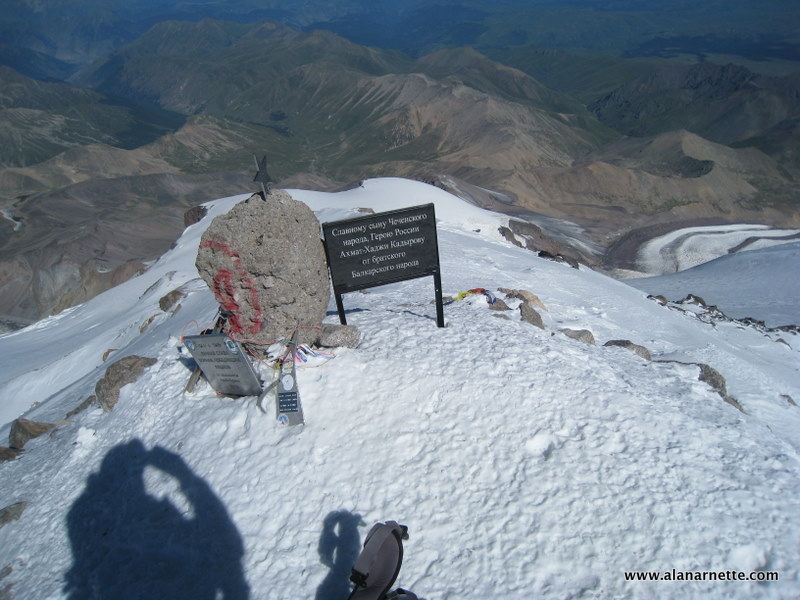
The winter of 2013 has come with strong summits, valiant efforts and unfortunate deaths. Climbing in the winter is dangerous at and deadly in many cases.
A coveted summit is one of the fourteen 8, 000m mountains. As of this winter, only K2 and Nanga Parbat remain to be summited in the winter in spite of repeated efforts.
Broad Peak
Broad Peak sitting in the shadow of K2 is 26,414 feet (8051 meters) is in Pakistan and has a deceptive reputation as one of the “easier” 8000m mountains. It is not, especially in the winter.
The Polish team of Maciej Berbeka, Adam Bielecki, Tomasz Kowalski and Artur Ma?ek stuck out harsh weather to successfully summit on March 5. Sadly, two of the team, Berbeka (58) and Kowalski (27), became separated from their teammates while descending extremely slowly.
Berbeka was sighted through a telescope at the saddle and reported to have made the normal 1 hour descent from the summit to the saddle in over 7 hours. He is thought to have fallen into a crevasse.
Expedition leader, Krzysztof Wielicki, said “Tomasz didn’t make it to the pass. He stayed on the Chinese side. It’s been 30 hours that he’s been there and he won’t be coming down. He was already weak. He wasn’t able to push on. For hours, I kept pushing him (via telephone) to move on but he was no longer capable of doing so.”
Once missing, for the next 48 hours, the entire team searched the route both in person and with telescopes from base camp without success. Night temperatures were approaching -35C (-31F) and the climbers had no shelter or sleeping bags. Helicopters were not available to search at these altitudes and also due to weather.
On Friday, March 7, a big storm moved in discouraging the team. The expedition leader, Krzysztof Wielicki, said Thursday there are “no chances at all” of finding them alive.
I recall my own climb on Broad Peak in 2006 (no summit). It is an unforgivingly steep climb with extreme winds and strong snow storms. The lower section of BP is steep then transitioning to a heavily crevassed section just below a saddle that leads to the summit ridge. There is a false summit before a treacherous, narrow and exposed section to the true summit. It takes extremely strong climbers to reach the true summit. The Polish team had made an earlier attempt to summit a few weeks ago reaching 7820m (25,656 ft) before bad weather stopped them.
This is such a sad ending for the Polish climbing community. They have set the standard for winter mountaineering in the Himalayas and have been the first on 10 of the 14 8,000m peaks in winter.
My deep condolences on this loss and also a sincere congratulations on achieving the first summit of Broad Peak in the winter.
Update March 8, 2013:
Krzysztof Wielicki, leader of the winter expedition of Polish Mountaineering Association to Broad Peak just posted this official statement:
Considering all the circumstances, conditions, my experience, history of Himalayan mountaineering, knowledge regarding physiology and high-altitude medicine as well as consultations with doctors and co-organizers of the expedition in Poland, I have to declare Maciej Berbeka and Tomasz Kowalski dead.
Taking into account the time that has passed since the last contact, altitude where it took place, their condition, current weather conditions and all other factors, I have to claim openly that both climbers are dead.
The expedition has come to an end. We are packing the base camp and start to descend. March via the Baltoro Glacier will take approximately 5 days. We will come back to Poland on approximately 20th March.
Nanga Parbart
Nanga Parbat is 26,600 foot, 8126 meter mountain, also located in Pakistan and known as one of the most difficult in the world.
A Hungarian/US team of David Klein (Hungarian), Zoltan Acs (Hungarian), and Ian Overton (American) attempted to be the first to summit Nanga Parbat in the winter. They did not use porters, Sherpas or supplemental oxygen. Poor weather forced them to abandoned their effort as did the Itialian-French team of Daniele Nardi and Elisabeth Revol on the unclimbed Mummery Face.
French snowboarder Joel Wischnewski was attempting to solo snowboard the Rupal face on Nanga Parbat. Sadly he disappeared without a trace.
Denali
For the third time Lonnie Dupre attempted a solo ascent of Mt. McKinley aka Denali in the winter. This year, he topped out at the 17,200 foot High Camp only to find hard packed snow and threatening conditions. This conspired to prevent him from making a suitable snow cave to rest up before his summit bid. He abandoned his bid soon after. He had spent 19 days on the mountain.
There have only been two December or January summits of McKinley but no one has done it alone.
There were two other climbers this year, Japanese Masatoshi Kuriaki, aka the Japanese Caribou attempting a winter solo climb on Mt. Hunter and Japanese photographer, Norio Matsumoto, looking for that perfect shot of the aurora. Kuriaki was back at the landing strip with Lonnie at end of January.

Ang Nima Sherpa
The Everest family lost one of their long time Sherpas with the death of Ang Nima Sherpa. He was one of the longest serving Ice fall doctors. He was 59 and died in his home village of Pangboche on January 25, 2013.
The Ice fall Doctors are a small team of Sherpas who set the route each year in the Khumbu Ice Fall and Western Cwm. They carry the aluminum ladders, ropes, pickets, wands and ice screws on their backs into the icy labyrinth only to return almost every day to reset the route as the ice moves up to three feet a day.
They repeat this ritual each year given the constant movement of the ice. I took the attached picture in 2008 of the Doctors heading into the Icefall.
These guys work hard and play hard and without them, climbers would not stand a chance of summiting each year.
Thanks to Ang Tshering Sherpa for notifying the climbing community of this loss.
K2 Documentary – The Summit
The film received rave reviews at the Sundance Film Festival. Created using original film footage and interviews with survivors, it attempts to unravel what happened on August 2088 when 11 climbers died over a two day period – the worst disaster ever on K2. I have a personal connection to this move as I climbed with one the d, Ger McDonnell, on Broad Peak in 2006.
THE SUMMIT from Nick Ryan on Vimeo.
Climb On!
Alan
Memories are Everything




6 thoughts on “Climbing News: Deaths on Broad Peak, Naga Parbat”
Hey Alan,
Wow. I can’t imagine trying one of those big Mountains in the winter… I remember you speaking about your experience on Broad Peak and K2 and how you organized the entire trip. That’s an incredible feat organizing an Expedition like that..I also remember you saying that it was Chicken Blood that brought you down….I think you said that you got to camp 3 on Broad Peak and that the route is incredibly sleep.
Zachary Zaitzeff
Thanks Rodney, sad sometimes that the news is more about the deaths than the summits.
Alan, thanks for continuing to write concise and accurate reports about the high mountains around the world. You provide an amazing service to the mountaineering community.
Sad news…not what I like to wake up to…I will have to read all about it tonight. Thanks Alan.
Yes, huge loss for the Polish (and all) climbing communities. However, not uncommon for such ambitious endeavors as winter 8000m climbs.
Alan – I was wondering about the cost of that achievement….this is the first i’m hearing about that part.
Comments are closed.